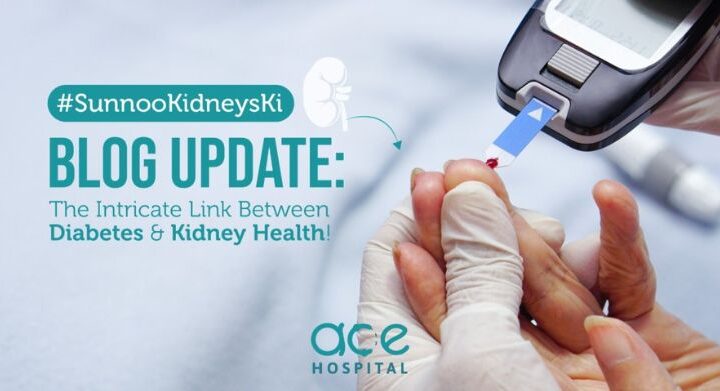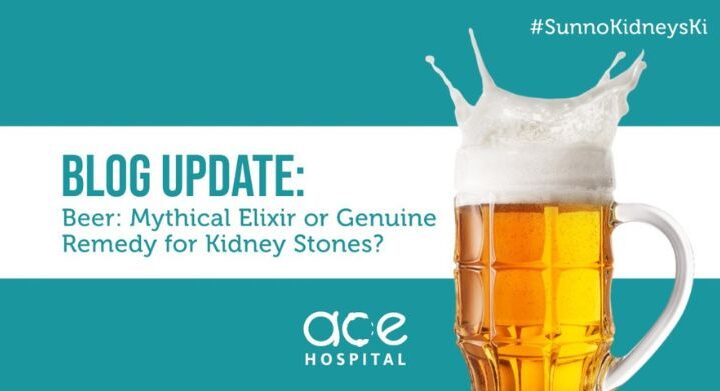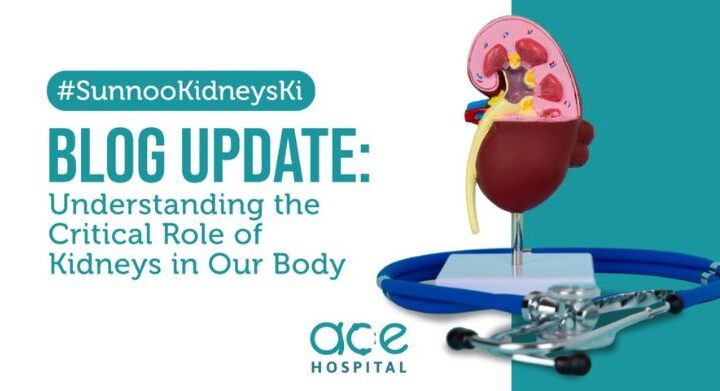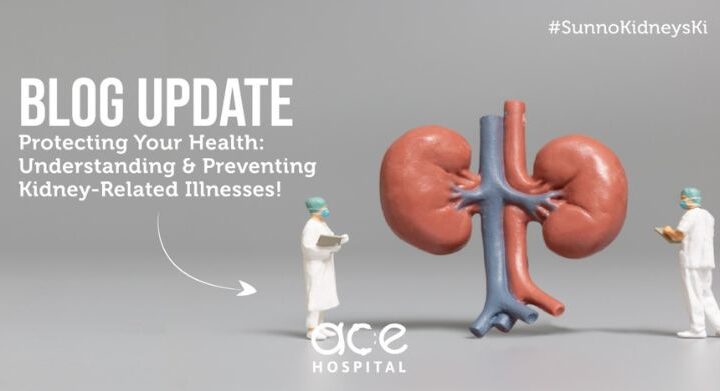Laser Surgeries for Kidney Stone Treatment in Pune
Laser surgeries are a minimally invasive and highly effective approach for treating kidney stones. At Ace Hospital Pune we offer following laser procedures used in kidney stone treatment, including:
- Flexible Ureteroscopy (FURS):
FURS involves the insertion of a thin, flexible scope (ureteroscope) through the urethra and bladder into the ureter and kidney. Once the scope reaches the stone, a laser fiber is passed through the scope and used to fragment the stone into smaller pieces. The smaller stone fragments can then be removed using grasping tools or flushed out naturally through urination. FURS is particularly effective for treating stones located in the upper or middle ureter and kidney. - Percutaneous Nephrolithotomy (PCNL):
PCNL is a more invasive procedure used to remove larger kidney stones or stones that cannot be effectively treated with other methods. It involves making a small hole in the back and creating a tract directly into the kidney. A nephroscope is then inserted through the hole, and a laser fiber is used to fragment the stone. The fragmented stones are then removed using specialized instruments, such as graspers or suction devices. PCNL is often reserved for complex cases or when other methods have been unsuccessful.

How Kidney Stones are Formed
The formation of kidney stones, also known as renal calculi or nephrolithiasis, involves a complex interplay of various factors. The detailed overview of the process

Stage 1 - Supersaturation of Urine
Kidney stones form when the concentration of certain substances in urine exceeds their solubility limits, leading to supersaturation. The primary substances involved in stone formation include calcium, oxalate, uric acid, and sometimes cystine.
Stage 2 - Nucleation
Supersaturated urine provides an environment conducive to the formation of tiny crystals. These crystals, which may consist of calcium oxalate, calcium phosphate, uric acid, or other substances, act as nuclei around which kidney stones can form.
Stage 3 - Crystal Growth
Once nucleation occurs, crystals can grow in size as more solute accumulates around them. The growth of crystals depends on factors such as urinary pH, concentration of stone-forming substances, and the presence of inhibitors or promoters of crystallization.
Stage 4 - Aggregation
Crystals can aggregate to form larger structures. This aggregation may occur due to physical forces or the presence of molecules that promote crystal adhesion.
Stage 5 - Stone Formation
Over time, the aggregated crystals can develop into kidney stones of varying sizes. The composition of the stone depends on the types of crystals involved and may include calcium oxalate, calcium phosphate, uric acid, or other minerals.
Stage 6 - Retention in the Kidney
Normally, urine flow helps to flush out small crystals before they can grow into stones. However, certain factors such as dehydration, urinary tract obstruction, or anatomical abnormalities can impair urine flow and lead to the retention of crystals in the kidney.
Factors Contributing to Stone Formation
Consuming foods rich in oxalate, calcium, or purines (found in meat) can increase the risk of stone formation. Inadequate fluid intake reduces urine volume, increasing the concentration of stone-forming substances. Some individuals may have a genetic predisposition to forming kidney stones. Certain medical conditions, such as hyperparathyroidism, gout, urinary tract infections, and metabolic disorders, can increase the risk of stone formation. Certain medications, such as diuretics, calcium-based antacids, and protease inhibitors, may increase the risk of kidney stones. Imbalances in urinary pH can promote the formation of specific types of stones. For example, acidic urine can lead to uric acid stones, while alkaline urine can favor the formation of calcium phosphate stones.
Overall, kidney stone formation is a multifactorial process influenced by a combination of genetic, environmental, dietary, and physiological factors. Preventive measures such as adequate hydration, dietary modifications, and medical management of underlying conditions can help reduce the risk of stone formation.

Kidney Stones Symptoms
Kidney stones can produce a variety of symptoms, depending on their size, location, and whether they are causing obstruction or irritation in the urinary tract. Some common symptoms of kidney stones include:
Severe Pain
This is typically the most prominent symptom associated with kidney stones. The pain can be intense and may come on suddenly. It often starts in the back or side, below the ribs, and may radiate to the lower abdomen or groin. The pain can fluctuate in intensity and may be accompanied by nausea or vomiting.
Hematuria (Blood in Urine)
Kidney stones can cause bleeding in the urinary tract, leading to pink, red, or brown discoloration of the urine. The presence of blood in the urine may be visible to the naked eye or detected through microscopic analysis.
Frequent Urination
Individuals with kidney stones may experience an increased urge to urinate, along with a sensation of incomplete emptying of the bladder. This can be due to irritation of the urinary tract caused by the presence of the stone.
Painful Urination
Passing a kidney stone through the urinary tract can cause discomfort or pain during urination. This sensation may be similar to that experienced during a urinary tract infection.
Obstruction of Urinary Flow
Larger kidney stones or stones lodged in the ureter can obstruct the flow of urine from the kidneys to the bladder. This can lead to urinary retention, causing symptoms such as urinary urgency, difficulty urinating, and pressure or discomfort in the lower abdomen.
Nausea and Vomiting
Severe pain associated with kidney stones can trigger nausea and vomiting in some individuals.


Urinary Tract Infections
Kidney stones can increase the risk of developing urinary tract infections. Symptoms of a UTI may include a burning sensation during urination, cloudy or foul-smelling urine, fever, and chills.
It’s important to note that not everyone with kidney stones will experience all of these symptoms, and the severity of symptoms can vary widely from person to person. Additionally, some individuals may have kidney stones without experiencing any noticeable symptoms, especially if the stones are small and pass through the urinary tract without causing obstruction. If you suspect you have kidney stones or are experiencing any of these symptoms, it’s essential to seek medical attention for proper diagnosis and treatment.
Kidney Stone Formation Places
The exact location of kidney stones within the urinary tract can determine the symptoms experienced by the individual and the appropriate treatment approach. Stones that remain within the kidneys or ureters may require interventions such as lithotripsy or ureteroscopy to break them into smaller pieces for easier passage. Stones that have passed into the bladder or urethra may be expelled naturally through urination or may require medical intervention depending on their size and composition.
The most common sites include:
Kidneys
These stones can vary in size and composition and may remain within the kidney or move into the ureter.
Ureters
When a stone becomes lodged in a ureter, it can cause significant pain and block the flow of urine.

Bladder
In some cases, small kidney stones can pass through the ureters and into the bladder. While stones may not typically form in the bladder, those that have passed into the bladder can cause discomfort and may need to be expelled through urination.
Urethra
Kidney stones that have traveled from the kidneys to the bladder and then into the urethra can sometimes be passed out of the body through the urethra during urination. This passage through the urethra can be painful, especially for larger stones.







